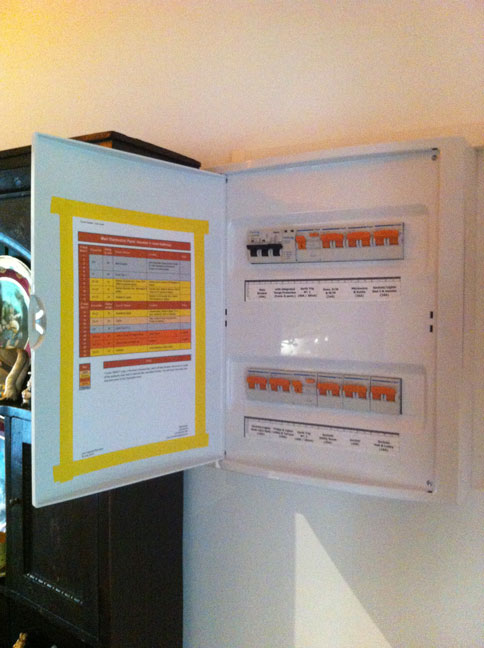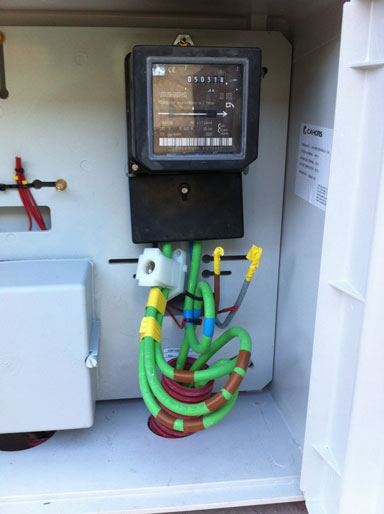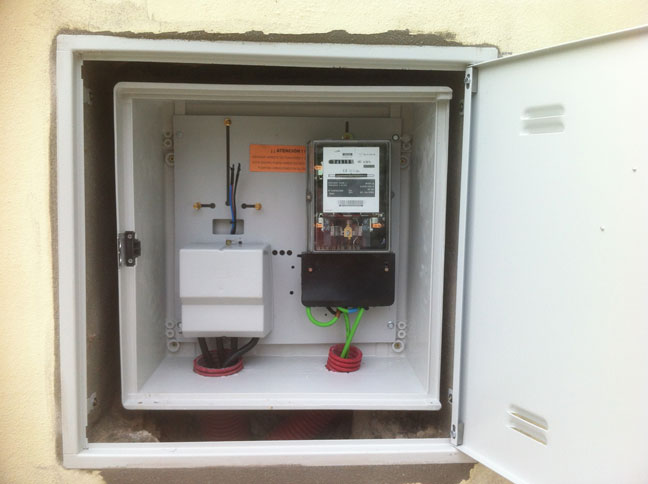For the statiticians amongst you I have produced a series of graphs, representing the increase in the cost of the Government Regulated electricity tariff over the last twelve years, from July 2003 to January 2016. I have produced three graphs; the Daily Cost of electricity, the Cost Breakdown per day (itemising the Fixed Charge ‘Potencia’, the Unit Charge ‘Consumo’, Electricity Tax, Meter Rental Fee and VAT ‘IVA’) and the Percentage Breakdown of Daily Cost (itemised as above).
The data used to create these graphs, using an Excel spreadsheet I developed, is based on data obtained from 99 electricity bills for a single-phase electricity supply; 22 bills for the period 18 July 2003 to 22 January 2007, and 77 bills for the period 22 January 2009 to 20 January 2016. Unfortunately bills for the period 23 January 2007 to 21 January 2009 were not available, hence the gap in the graphs!
Click here to see a range of graphs for differnt scenarios (more…)
Way way back in August 2010 I posted a Warning to 3-Phase Consumers concerning the ‘potencia’ they have contracted and the inevitable problems they will encounter when Endesa, or other electricity provider, requests the installation of an ‘Interruptor de Control de Potencia’ (ICP) on their supply.
With the passing of time, things have moved on significantly, and so I am reposting my warning to all 3-Phase consumers! The function of the ‘current limiter’, the ICP, is now integrated within the new ‘intelligent’ Smart Meters being ‘rolled out’ throughout Spain. The installation of Smart Meters has been ongoing for several years and the Government plan is to complete the roll-out before 31 December 2018.
(more…)
I receive numerous telephone calls, almost on a daily basis, from concerned consumers who feel they are paying too much for their electricity. Join the club! The days of cheap electricity in Spain are over!
In July 2009 the electricty supply market was deregulated, i.e. ‘opened up’ to free competition from a number of new ‘Free Market’ electricity suppliers. Since then, the electricity providers have seen a drop in income, due to consumers installing new energy efficient appliances and changing to ‘low energy’ and LED lighting.
Over more recent years, you will have noticed your ‘Fixed Charge’ (facturación por potencia contratada) has increased significantly, compared to the ‘Unit Charge’ (facturación por energía consumida).
The Fixed Charge is based on the ‘potencia contratada’ (power available), in Kilowatts. This charge will be fairly consistent from bill to bill, differing only by the exact number of days in the billing period. The power available was previously restricted by the ‘Interruptor de Control de Potencia’ (ICP) installed in your fuse box, but is now restricted by an integrated limiter in the new ‘intelligent’ Smart Meter (if fitted).
The Unit Charge is based on the electricity you use, in Kilowatt Hours. This charge may vary considerably from bill to bill, depending on your electricity consumption. You are more likely to use more electricity in winter for heating, hot water, cooking etc.
The amount you pay for your electricity depends on your tariff and potencia contracted. Consumers contracted with Endesa will find the following graphic useful in explaining the various billing methods, depending on whether you are contarcted with the regulated company Endesa Energía XXI or the free market company Endesa Energía SAU. The billing method also depends on whether a Smart Meter is fitted and whether or not it is integrated within the ‘telemetry’ network (sistema de telegestion).
(more…)
Use this Endesa guide to check if the energy rating (potencia contratada) of your single-phase domestic electricity contract is adequate to support the range of electrical appliances in your home.
Using the matrix below check which appliances you have and read along the row to determine the minimum energy rating in Kilowatts (kW’s) you require in your home. I recommend you check the energy ratings of your individual appliances before deciding on a suitable potencia to contract.
the column ‘Contracts prior 2005’ refers to old Sevillana or Endesa contracts setup when the nominal supply voltage in Spain was set at 220 Volts
the column ‘Contracts after 2005’ refers to new Endesa contracts setup since the nominal supply voltage in Europe was set at 230 Volts
The small difference in energy ratings between old and new contracts is due to the small change in nominal supply voltage. The column on the far right shows the rating of the ‘current limiter’ integrated within the Smart Meter (if fitted), or the rating of the ‘ICP‘ installed in the fusebox (if fitted).
Note: Key for heating / aircon:  – 1 or 2 units max.,
– 1 or 2 units max.,  – complete home system
– complete home system
Click here Endesa Guide to determine Potencia Required for Single-Phase Contract to see the guide in full-screen, then use your ‘Back’ button on your browser to return here.
The energy ratings above are minimum recommendations and apply to single-phase domestic contracts only! Selecting the minimum energy rating may not facilitate simultaneous running of all appliances listed. To guarantee adequate power consider which appliances will be running at the same time and plan to upgrade to the next level if necessary.
Consumers with 3-phase electricity supplies please see my post entitled Determining Potencia for 3-Phase Installations, to be published in the near future!
(more…)




 – 1 or 2 units max.,
– 1 or 2 units max.,  – complete home system
– complete home system